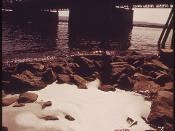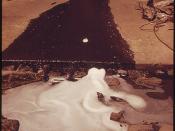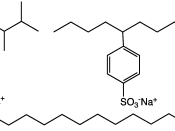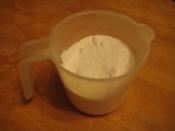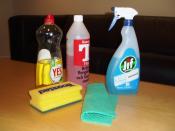Research Project There are many unexplained phenomena in the field of modern science today. Scientist are trying as hard as they can to find answers to the mysteries of the universe, constantly performing experiments and conducting research to explain these things. You don't have to have a degree in a science to fulfill your quest for knowledge. All that you need is the desire to learn, organization skills, and excellent research skills. Some unexplained phenomena concerning planaria are instances such as Binary Fission, where the planaria reproduces itself asexually, and its ability to regenerate lost parts. Planaria are also to survive without ever having any blood in their entire system. The use of green (environmentally safe) versus regular detergents may be a deciding factor in the survival rate of the planaria.
Planaria There are several types of planaria. They are mostly small, thin and flat. Their bodies are usually leafy in shape.
Planaria live on their own, moving about freely and feeding on small or dead animals (Worms 312). They have arrow shaped heads and are brown like the mud around them (Alien 1). The head consists of two eyespots and does not contain a mouth. The mouth of the planaria is actually located on the creature's belly. It finds dead and decaying animals and eats them and it also finds shelter within the deceased creatures. The planaria has neither gills nor lungs. It simply takes in oxygen through it's skin. If you cut a planaria in two from its head to its tail, both halves will live and grow new, complete bodies (Wonderful 1). Planaria belong to the phylum, Platyhelminthes (Flatworms). They are free living; flat-bodied, freshwater creatures that have an incredible ability to regenerate lost body parts. They live in lakes, streams, ponds, and other freshwater bodies (FAQ 1). The planarian outer surface is called the ectoderm, and is usually covered with cilia (short, wavy hair-like structures). In most cases the have a very well developed pharynx. Each worm has a large brain and both male and female reproductive organs. This means that they can reproduce asexually (Flatworm 1). Planaria provide food for larger animals and they help recycle materials from dead animals in the pond. They also help control small animals in the pond environment because they prey on both dead and living animals (Alien 1). The planaria is a non-parasitic organism. Its body includes a simple nervous system that includes a 'brain'. It also contains muscle bundles, an internal reproductive system (as mentioned), a blind gut branching throughout the body, and an excretory system that includes specialized cells called "flame cells"ÃÂ. The planaria actually have no blood at all, but they use the flame cells for circulation (FAQ 1). Planarians can be found under rocks or gliding over the sand in shallow salt and fresh waters (Worms 312). Planaria are found in almost every kind of environment, on land and salt or fresh water. When found in salt water they mostly feed on plankton.
In order to keep planaria alive you must use only spring water or pond water, not distilled water. Distilled water does not contain any of the minerals and nutrients that they need to survive. Tap water also cannot be used because the chlorine and fluoride in the water will kill the planaria. The planaria should be fed small bits of hard cooked 'egg yolk every few days to a week at most. Do not feed them during their mating season during February to March. Let them eat for thirty minutes to an hour at most and change their water after they eat. Be sure to clean off the planaria themselves. Keep the planaria at a room temperature of about 24 degrees Celsius. Don't expose the planaria to harsh light. Keep them in a dark place most of the time. They are sensitive to extreme light, heat, and pH levels, so try to add only the smallest amounts of foreign substances as needed (FAQ 1).
Detergents A detergent is "ÃÂan organic (carbon containing) chemical substance made of carbon, oxygen, sulfur, and hydrogen compounds that combines with water to clean soiled materials'. Soap has a different chemical makeup than detergents but is still considered a detergent. Household detergents are used in laundry and in dishwashing (Detergent 480-481). The ingredients are often called surface-active agents, or surfactants, because they act upon a surface. Synthetic detergents were invented in the time of World War II because of a shortage of fat. "ÃÂDetergents are made by treating a benzene-type compound with sulfuric acid, followed by neutralization with alkali to convert the product to its sodium salt"ÃÂ. There is a problem with most detergents though. Most regular detergents are not soluble in water and are not biodegradable. A new kind of detergent in which the aromatic compound is replaced by a so-called linear alkyl-type compound is said to be more soluble in water and also more biodegradable (Microsoft 1).
Green detergents are environmentally friendly alternatives to traditional detergent. They are made with non-chlorine bleach and enzymes. Only automatic dishwasher detergents still contain harmful phosphates that may kill microorganisms when poured down the drain. Green detergents may just stop this from happening. Green detergents do not contain phosphates, so they are much safer than traditional dish soaps (Deneen 1).
Now that you know most of the characteristics of the planaria, you will be able to form hypotheses about these organisms and you will also be able to conduct experiments to figure growth rates, survival rates, reproduction rates, etc. The field of possible experiments is virtually unlimited. Detergents have certain similarities with planaria in that people pour detergents down the drain, possibly affecting the environment, and maybe even the survival of the planaria. This knowledge should help in any experiments involving detergents and other similar chemicals
